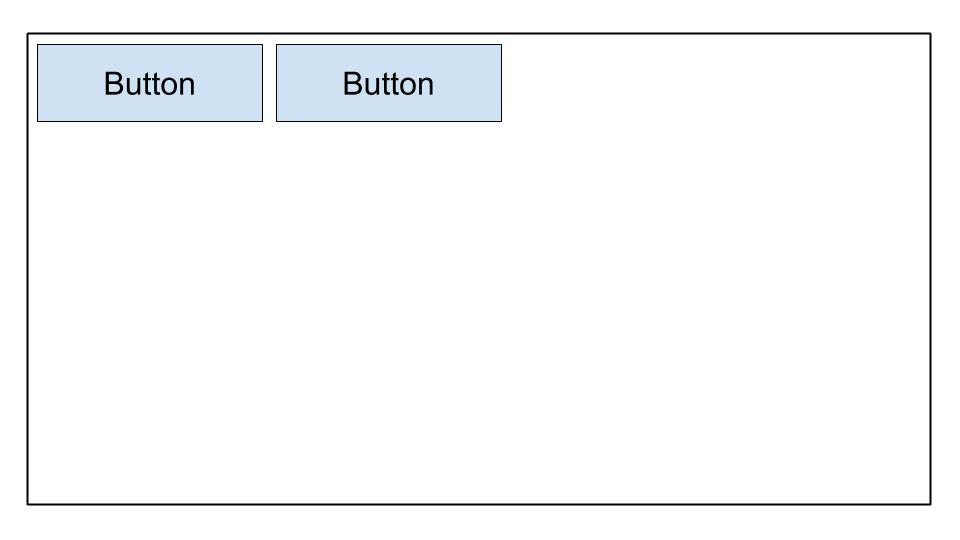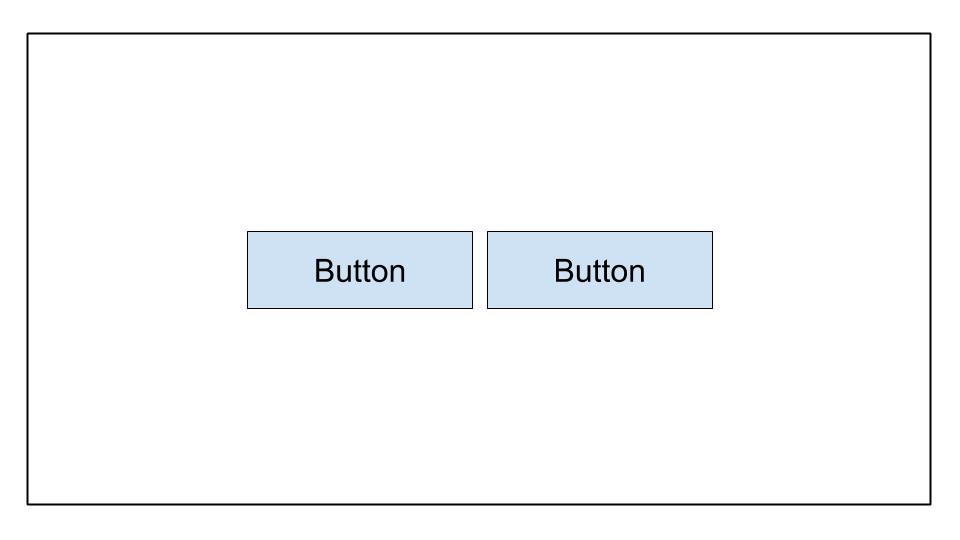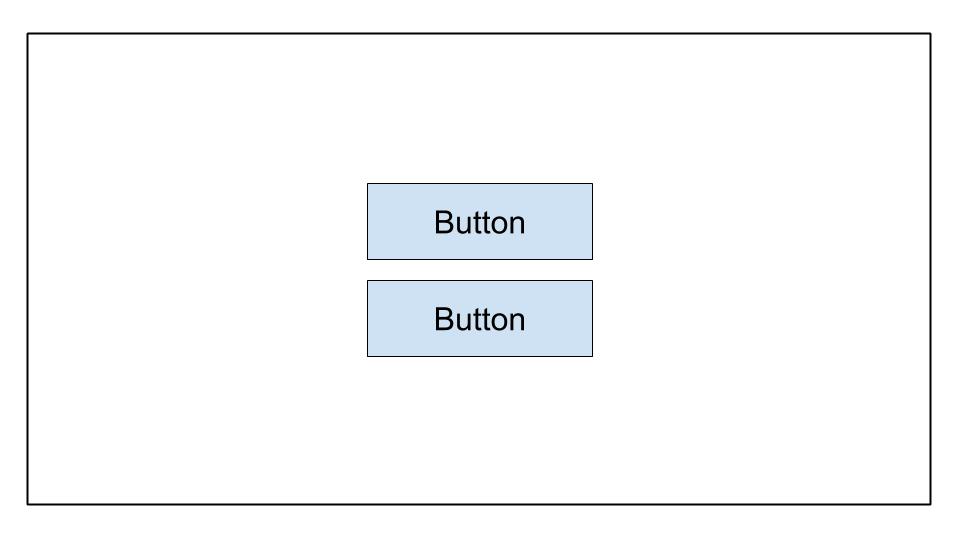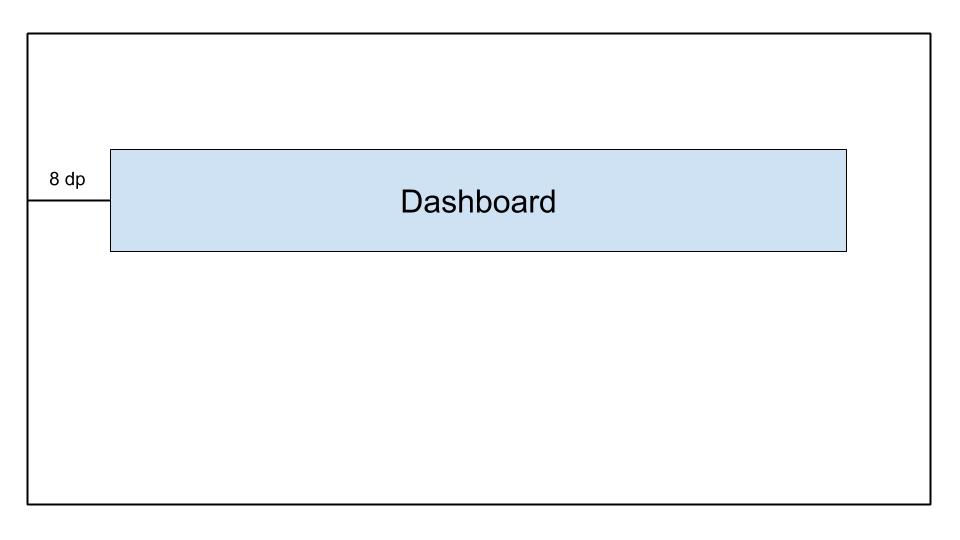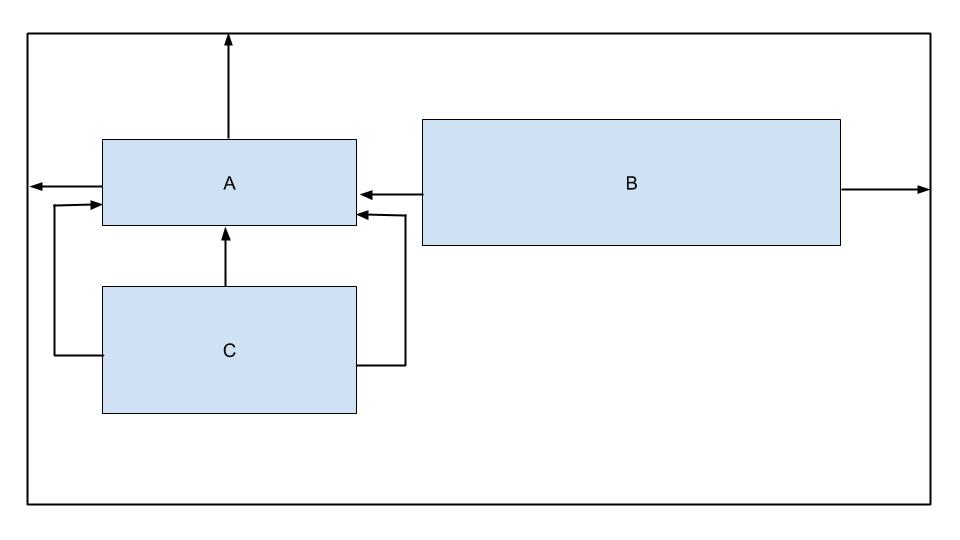Q1. To add features, components, and permissions to your Android app, which file needs to be edited?
- AndroidManifest.xml
- Components.xml
- AppManifest.xml
- ComponentManifest.xml
- android:talkBack
- android:labelFor
- android:hint
- android:contentDescription
Q3. You launch your app, and when you navigate to a new screen it crashes, Which action will NOT help you diagnose the issue?
- Set breakpoints and then step through the code line by line
- Use the profiler tools in Android Studio to detect anomalies CPU, and network usage.
- Add a Thread.sleep()call before you start the new activity.
- inspect the logs in Logcat.
- all of these answers
- The device token is not being sent to push provider correctly.
- Google Play Services is not installed on the deivce/emulator.
- Battery optimization is turned on on the device.
Q5. What is correct set of classes needed to implement a RecyclerView of items that displays a list of widgets vertically?
- [ ]
RecycleView
RecyclerView.Adapter
RecyclerView.ViewHolder<T extends BaseViewHolder>
LinearLayoutManager
- [ ]
RecycleView
RecyclerView.Adapter
RecyclerView.ViewHolder
LinearLayoutManager
- [x]
RecycleView
RecyclerView.Adapter<VH extends ViewHolder>
RecyclerView.ViewHolder
LinearLayoutManager
Q6. The Android system kills process when it needs to free up memory. The likelihood of the system killing a given process depends on the state of the process and the activity at the time. With combination of process and activity state is most likely to be killed?
- Process:In the background;Activity:Is stopped
- Process:In the background;Activity:Is paused
- Process:In the foreground;Activity:Is started
- Process:In the foreground;Activity:Is paused
Q7. You have created a NextActivity class that relies on a string containing some data that pass inside the intent Which code snippet allows you to launch your activity?
- [ ]
Intent(this, NextActivity::class.java).also { intent ->
startActivity(intent)
}
- [ ]
Intent(this, NextActivity::class.java).apply {
put(EXTRA_NEXT, "some data")
}.also { intent ->
activityStart(intent)
}
- [x]
Intent(this, NextActivity::class.java).apply {
putExtra(EXTRA_NEXT, "some data")
}.also { intent ->
startActivity(intent)
}
- [ ]
Intent(this, NextActivity::class.java).apply {
put(EXTRA_NEXT, "some data")
}.also { intent ->
activityStart(intent)
}
Q8. You want to include about and setting modules in your project. Which files accurately reflects their inclusion?
- in build.gradle:include ':app',':about' ':settings'
- in settings.gradle:include ':app',':about' ':settings'
- in settings.gradle:include ':about',':settings'
- in gradle.properties:include ':app',':about' ':settings'
- to denote that a class, methos, or field has its visibility relaxed to make code testable
- to denote that a class, method, or field is visible only in the test code
- to denote that a class, method, or field has its visibility increased to make code less testable
- to throw a run-time error if a class, methos, or field with this annotation is accessed improperly
Q10. How would you specify in your build.gradle file that your app required at least API level 21 to run, but that it can be tested on API level 28?
- [ ]
defaultConfig {
...
minApiVersion 21
targetApiVersion 28
}
- [ ]
defaultConfig {
...
targetSdkVersion 21
testSdkVersion 28
}
- [ ]
defaultConfig {
...
minSdkVersion 21
testApiVersion 28
}
- [x]
defaultConfig {
...
minSdkVersion 21
targetSdkVersion 28
}
- when calling finish()in the parent activity
- when placing an app into the background by sitching to another app
- When onStop() is called in the target activity
- [] when calling finish() in the target activity
Q12. You need to remove an Event based on it;s id from your API, Which code snippet defines that request in Retrofit?
- @DELETE("events) fun deleteEvent(@Path("id") id: Long): Call
- @DELETE("events/{id}") fun deleteEvent(@Path("id") id: Long): Call
- @REMOVE("events/{id}") fun deleteEvent(@Path("id") id: Long): Call
- @DELETE("events/{id}") fun deleteEvent(@Path("id") id: Long): Call
- when you need to have the app's strings present in multiple lanuages
- when you have to provide different versions of your app based on the physical device size
- when you want to provide different versions of your app based on the device screen density
- when you want to provide different version of your app with custom configuration and resources
Q14. Given the fragment below, how would you get access to a TextView with an ID of text_home contained in the layout file of a Fragment class?
private lateinit var textView: TextView
override fun onCreateView(...): View? {
val root = inflator.inflator(R>layout.fragment_home, container, false)
textView = ??
return root
}
- root.getById(R.id.text_home)
- findViewByID(R.id.text_home)
- root.findViewById(R.id.text_home)
- root.find(R.id.text_home)
- The test runner facilitates loading your test package and the app under test onto a device or emulator, runs the test, and reports the results.
- The test runner creating screenshots of each screen that displayed while tests are executed.
- The test runner facilitates parallelization of test classes by providing for each test class.
- The test runner facilitates interacting with visible elements on a device, regardless of the activity or fragment that has focus.
- the onSaveInstance()method
- all of these answers
- persistent storage
- ViewModel objects
Q17. Given the definition below. how would you get access a TextView with an ID of text_home contained in thr layout file of a Fragment class?
- root.find(R.id.text_home)
- findViewById(R.id.text_home)
- root.getById(R.id.text_home)
- root.findViewById(R.id.text_home)
- Thread Not Responding
- Application Paused
- Application Not Responding
- Application Blocked
Q19. How would you retrieve the value of a user's email from SharedPreferences while ensuring that the returned value is not null?
- getPreferances(this).getString(Email,"")
- getDefaultSharedPrefarances(this).getString(EMAIL,null)
- getDefaultSharedPreferances(this).getString(EMAIL,"")
- getPreferances(this).getString(EMAIL,null)
Explanation: In Method "getDefaultSharedPrefarances(this).getString()" Second parameter is passed so that it can be returned, in case key doesn't exist. So we need to pass an empty string to be returned in case key doesn't exist.
- Although screen pixel density varies, this does not impact the use of pixels to define sizes.
- Large devices always have more pixels so your UI elements will be e=affected if you define them with pixels.
- The same number of pixels may correspond to different physical sizes, affecting the appearance of your UI elements.
- Different devices have different understanding of what a pixel is , affecting the appearance of your UI elements
Q21. You need to get a list of devices that are attached to your computer with USB debugging enable. Which command would execute using the Android Debug Bridge?
- list devices
- adb devices
- list avd
- dir devices
- [ ]
<shape xmlns:android="http://schemas.android.com/apk/res/android"
android:shape="oval">
<stroke
android:width="4dp"
android:color="@android:color/white" />
<solid android:color="@android:color/black" />
</shape>- [ ]
<oval xmlns:android="http://schemas.android.com/apk/res/android">
<stroke android:width="4dp" android:color="@android:color/black"/>
<solid android:color="@android:color/white"/>
</oval>- [x]
<shape xmlns:android="http://schemas.android.com/apk/res/android"
android:shape="oval">
<stroke
android:width="4dp"
android:color="@android:color/black" />
<solid android:color="@android:color/white" />
</shape>- [ ]
<shape xmlns:android="http://schemas.android.com/apk/res/android"
android:shape="oval">
<stroke
android:width="4dp"
android:color="@android:color/white" />
<solid android:color="@android:color/white" />
</shape>- external file storage
- SharedPereferences
- SQLite
- internal file storage
Q24. You need to retrieve a list of photos from an API. Which code snippet defines an HTML GET request in Retrofit?
- @GET("photo/{id}"} fun listPhotos(@Path("id") id:Long?) : Call
- @LIST("photo") fun listPhotos() : Call<List>
- @GET("photo") fun listPhotos() : Call
- @GET("photo") fun listPhotos() : Call<List>
- assertThat(resultAdd).is(2.0)
- assertNotNull(resultAdd)
- assertThat(resultAdd).isWqualTo(2.0)
- assertThat(resultAdd)
-
<merge/> -
<include/> -
<layout/> -
<add/>
Q27. You want to provide a different drawable for devices that are in landscape mode and whose language is set to French. which directory is named correctly?
- fr-land-drawable
- drawable-fr-land
- drawable-french-land
- french-land-drawable
android.permission.ACCESS_NETWORK_STATE
- to monitor the location of the devices so that you don't attempt to make network calls when the user is stationary
- to request the ability to make network calls from your app
- to monitor the network state of the device so that you can display an in-app banner to the user
- to monitor the network state of the devices so that you don't attempt to make network calls when the network is unavailable
<LinearLayout
android:layout_width="match_parent"
android:layout_height="match_parent"
android:orientation="horizontal"
android:gravity="center">
<Button
android:layout_width="wrap_content"
android:layout_height="wrap_content"
android:text="Button" />
<Button
android:layout_width="wrap_content"
android:layout_height="wrap_content"
android:text="Button" />
</LinearLayout>val dialerIntent = Intent()
val et = findViewById(R.id.some_edit_text)
dialerIntent.action = Intent.ACTION_DIAL
dialerIntent.data = Uri.parse("tel:" + et.getText()?.toString())
startActivity(dialerIntent)
-
startActivityWithResult()should be used instead ofstartActivity()when usingIntent.ACTION_DIAL. - For
Intent.ACTION_DIAL, theIntentoptionIntent.FLAG_ACTIVITY_NEW_TASKmust be added when using thisdialerIntent. - The
dialerIntentwill cause an ActivityNotFoundException to be thrown on devices that do not supportIntent.ACTION_DIAL. - The permission
android.permission.CALL_PHONEmust be requested first beforeIntent.ACTION_DIALcan be used.
- when you need access to the original file names and file hierarchy
- when you need access to the file with its
resource ID, likeR.assets.filename - when you have XML files that define tween animations
- when you need to access the file in its raw form using
Resources.openRawResource()
Q32. You want to allow users to take pictures in your app. Which is not an advantage of creating an appropriate intent, instead of requesting the camera permission directly?
- Users can select their favorite photo apps to take pictures.
- You do not have to make a permission request in your app to take a picture.
- You have full control over the user experience. The app that handles the camera
intentwill respect your design choices. - You do not have to design the UI. The app that handles the camera
intentwill provide the UI.
- when a user first opens your app and you want to provide an explanation for the use of a given permission
- when a user has previously denied the request for a given permission and selects "Tell me more"
- when a user has previously denied the request for a given permission and you want to provide an explanation for its use
- when a user has previously denied the request for a given permission and selected "Don't ask again," but you need the permission for your app to function
Q34. You would like to enable analytics tracking only in release builds. How can you create a new field in the generated BuildConfig class to store that value?
- [ ]
buildTypes {
debug {
buildConfig 'boolean', 'ENABLE_ANALYTICS', 'false'
}
release {
buildConfig 'boolean', 'ENABLE_ANALYTICS', 'true'
}
}
- [ ]
buildTypes {
debug {
buildConfig 'String', 'ENABLE_ANALYTICS', 'false'
}
release {
buildConfig 'String', 'ENABLE_ANALYTICS', 'true'
}
}
- [x]
buildTypes {
debug {
buildConfigField 'boolean', 'ENABLE_ANALYTICS', 'false'
}
release {
buildConfigField 'boolean', 'ENABLE_ANALYTICS', 'true'
}
}
- [ ]
buildTypes {
debug {
buildConfigField 'boolean', 'ENABLE_ANALYTICS', 'true'
}
release {
buildConfigField 'boolean', 'ENABLE_ANALYTICS', 'false'
}
}
- JPG
- PNG
- MPEG
- WebP
Q36. You have built code to make a network call and tested that it works in your development environment. However, when you publish it to the Play console, the networking call fails to work. What will not help you troubleshoot this issue?
- checking whether
ProGuard-keepclassmembers have been added to the network data transfer objects (DTOs) in question - using the profiler tools in Android Studio to detect anomalies in CPU, memory, and network usage
- checking for exceptions in the server logs or server console
- checking that the network data transfer object has
@SerizlizedNameapplied to its member properties
- [ ]
<androidx.constraintlayout.widget.ConstraintLayout
...>
<TextView
android:id="@+id/text_dashboard"
android:layout_width="match_parent"
android:layout_height="wrap_content"
android:layout_marginTop="16dp"
android:padding="8dp"
android:textAlignment="center"
android:text="Dashboard"
app:layout_constraintEnd_toEndOf="parent"
app:layout_constraintStart_toStartOf="parent"
app:layout_constraintTop_toTopOf="parent" />
</androidx.constraintlayout.widget.ConstraintLayout>- [x]
<androidx.constraintlayout.widget.ConstraintLayout
...>
<TextView
android:id="@+id/text_dashboard"
android:layout_width="match_parent"
android:layout_height="wrap_content"
android:layout_marginStart="8dp"
android:layout_marginEnd="8dp"
android:textAlignment="center"
android:text="Dashboard"
app:layout_constraintEnd_toEndOf="parent"
app:layout_constraintStart_toStartOf="parent"
app:layout_constraintTop_toTopOf="parent" />
</androidx.constraintlayout.widget.ConstraintLayout>- [ ]
<androidx.constraintlayout.widget.ConstraintLayout
...>
<TextView
android:id="@+id/text_dashboard"
android:layout_width="match_parent"
android:layout_height="wrap_content"
android:layout_marginStart="8dp"
android:layout_marginTop="16dp"
android:layout_marginEnd="8dp"
android:padding="8dp"
android:textAlignment="center"
android:text="Dashboard"
app:layout_constraintEnd_toEndOf="parent"
app:layout_constraintStart_toStartOf="parent"
app:layout_constraintTop_toTopOf="parent" />
</androidx.constraintlayout.widget.ConstraintLayout>- [ ]
<androidx.constraintlayout.widget.ConstraintLayout
...>
<TextView
android:id="@+id/text_dashboard"
android:layout_width="match_parent"
android:layout_height="wrap_content"
android:layout_marginStart="8dp"
android:layout_marginTop="16dp"
android:layout_marginEnd="8dp"
android:padding="8dp"
android:text="Dashboard"
app:layout_constraintEnd_toEndOf="parent"
app:layout_constraintStart_toStartOf="parent"
/>
</androidx.constraintlayout.widget.ConstraintLayout>Q38. Which source set is _not_ available to you by default when Android Studio creates a new project?
- test
- androidTest
- app
- main
- [x]
<activity android:name=".ExampleActivity" />- [ ]
<activity android:name=".ExampleActivity">
<intent-filter>
<action android:name="android.intent.action.SEND" />
</intent-filter>
</activity>- [ ]
<activity android:name=".ExampleActivity">
<intent-filter>
<action android:name="android.intent.action.MAIN" />
<category android:name="android.intent.category.LAUNCHER" />
</intent-filter>
</activity>- [ ]
<activity android:name=".ExampleActivity">
<intent-filter>
<action android:name="android.intent.action.VIEW" />
</intent-filter>
</activity>Explanation: Intent filters are used to make activities accessible to other apps using intents. So we have to choose option which have no intent filter to make sure it is not accessible by intent
Q40. To preserve on-device memory, how might you determine that the user's device has limited storage capabilities?
- Use the
ActivityManager.isLowRamDevice()method to find out whether a device defines itself as "low RAM." - Use the
Activity.islowRam()method to find out whether a device defines itself as "low RAM." - Use the
ConnectivityManager.hasLowMemory()method to find out whether a device defines itself as "low RAM." - Make an image download request and check the remaining device storage usage.
- Use a common Gradle module shared by different Android projects.
- Prefer to build custom views or fragments over activities.
- Prefer to build activities instead of fragments.
- Break down UI layouts into common elements and use
<include/>to include them in other layout XML files.
- LinearLayout
- ConstraintLayout
- FrameLayout
- RelativeLayout
Q43. You need to upgrade to the latest version of the Android Gradle plugin. Which file should you modify?
- root_project_dir/app/build.gradle.
- root_project_dir/settings.gradle.
- root_project_dir/build.gradle.
- root_project_dir/app/gradle.properties.
- The Application class is instantiated before any other class when the process for the application is created.
- The Application class is instantiated after any permissions requests when the process for the application is created.
- The Application class is created each time a new Activity is launched, making it ideal for initialization code.
- The Application class is created each time a background service is called, making it ideal for initialization code.
- /drawable
- /icon
- /mipmap
- /launcher
- [ ]
<shape xmlns:android-"http://schemas.android.com/apk/res/android"
android:shape-"oval">
<gradient
android:startColor-"@android:color/white"
android:endColor-"@android:color/black"
android:angle-"45"/>
</shape>- [ ]
<rectangle xmlns:android-"http://schemas.android.com/apk/res/android">
<gradient
android:startColor-"@android:color/white"
android:endColor-"android:color/black"
android:angle-"135"/>
</rectangle>- [ ]
<shape xmlns:android-"http://schemas.android.com/apk/res/android"
android:shape-"rectangle">
<gradient
android:startColor-"@android:color/white"
android:endColor-"@android:color/black"
android:angle-"135"/>
</shape>- [ ]
<shape xmlns:android-"http://schemas.android.com/apk/res/android"
android:shape-"rectangle">
<gradient
android:startColor-"@android:color/white"
android:endColor-"@android:color/black"
android:angle-"98"/>
</shape>- View B is not horizontally constrained.
- View C has too many constraints.
- View B is not vertically constrained.
- View C is constrained to the parent.
Q48. Given this code snippey from a build.gradle file, which choice is not a possible build variant?
android { ... defaultConfig{...}
buildTypes{ debug{...} releasae{...} }
flavorDimensions "environment"
productFlavors {
producation {...}
staging {...}
}
}
- productionDebug.
- developmentDebug.
- stagingDebug.
- stagingRelease.
- Break down UI layouts into common elements and use to include them in other layout XML files.
- Prefer to build custom views or fragments over activities.
- Use a common Gradle module shared by different Android projects.
- Prefer to build activities instead of fragments.
- when the tests consist only of unit tests.
- when the number of tests to run is large(500+).
- when the tests need to run on your local machine.
- when the tests need to run on real or virtual devices.
- to denote that a class, method, or field is visible only in test code.
- to dentoe that a class, method or field has it's visibility increased to make code less testable.
- to denote that a class, method, or field has it's visibility relaxed to make code testable.
- to throw a run-time error if a class, method, or field which this annotation is accessed improperly.
Q52. Given an APK named app-internal-debug.apk produced from the build process, which statement is likely to be true?
- This APK is created on a developer machine from the debug product flavor.
- This APK is created from the internalDebug product flavor.
- This APK created from the debug product flavor and internal build type.
- This APK is created from the debug build type and internal product flavor.
Conversion to Dalvik format filed: Unable to execute dex: method ID not in [0, 0xffff]: 65536
- You have included incorect format information in your build.gradle file.
- You have added more than 20 dependencies to your build.gradle.
- You have exceeded the total number of methods that can be referenced within a single DEX file.
- You have a NullPointerException in your code.
Q54. Which statement, in build.gradle file, correctly denotes that the corresponding module is an Android library module?
- apply plugin: 'com.module.library'
- apply plugin: 'com.android.library'
- apply plugin: 'com.module.library'
- include plugin: 'com.module.library'
Q55. Given the following dimens.xml file, how would you define an ImageView with medium spacing at the bottom?
<?xml version=1.0 encoding="utf-8"?>
<resources>
<dimen name="spacing_medium">8dp</dimen>
<dimen name="spacing_large">12dp</dimen>
</resources>
- [ ]
<ImageView
android:id=@+id/image_map_pin"
android:layout_width="wrap_content"
android:layout_heignt="wrap_content"
android:src=@drawable/map_pin />
- [ ]
android:id=@+id/image_map_pin"
android:layout_width="wrap_content"
android:layout_heignt="wrap_content"
androi:layout_botttom="@dimen/spacing_medium"
android:src=@drawable/map_pin />
- [ ]
<ImageView
android:id=@+id/image_map_pin"
android:layout_width="wrap_content"
android:layout_heignt="wrap_content"
android:layout_marginBottom="@resources/spacing_medium"
android:src=@drawable/map_pin />
- [ ]
<ImageView
android:id=@+id/image_map_pin"
android:layout_width="wrap_content"
android:layout_heignt="wrap_content"
android:layout_marginBottom="@dimen/spacing_medium"
android:src=@drawable/map_pin />

